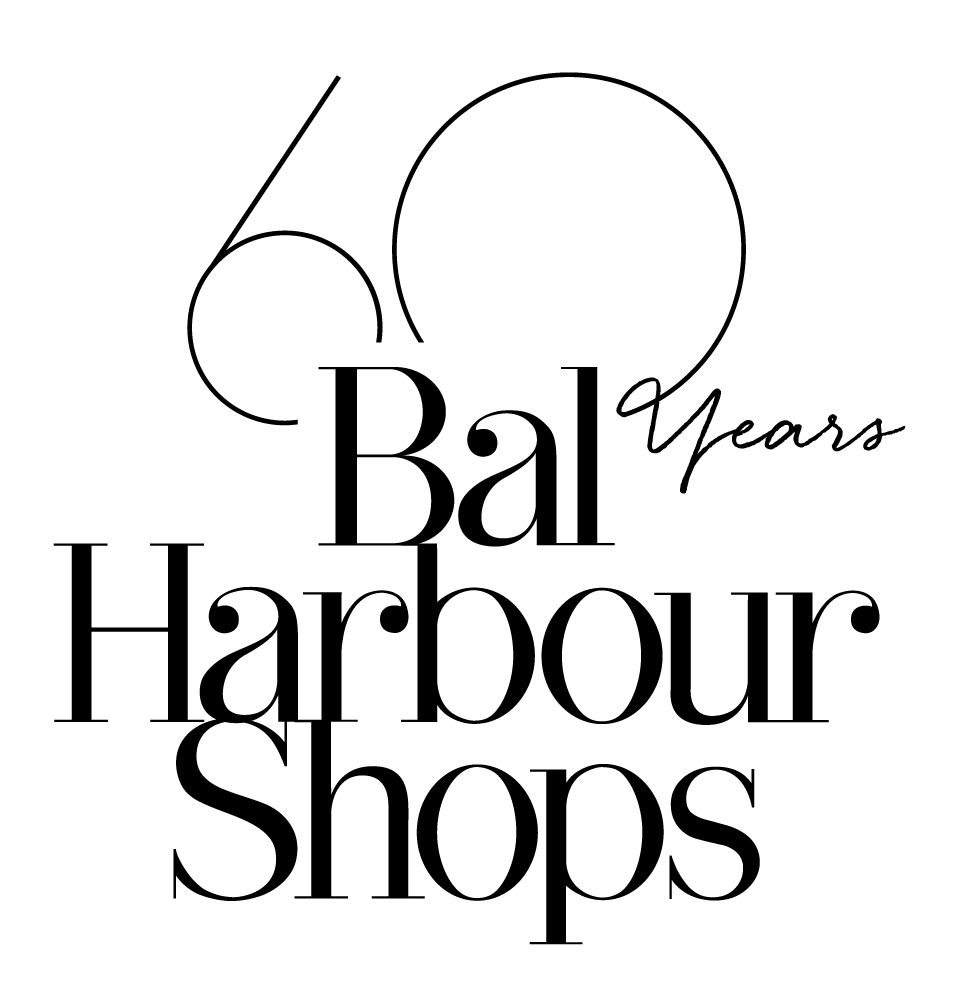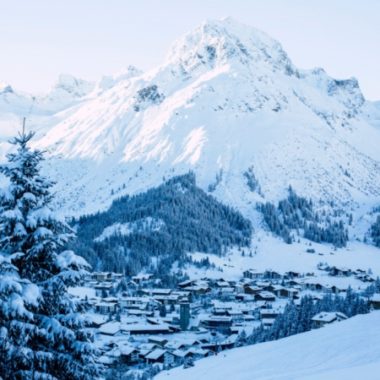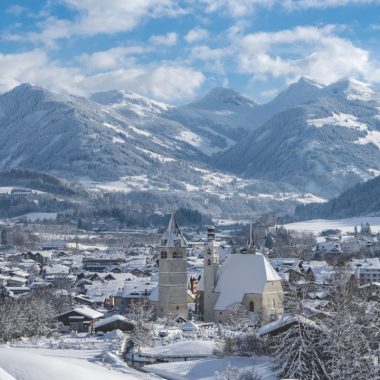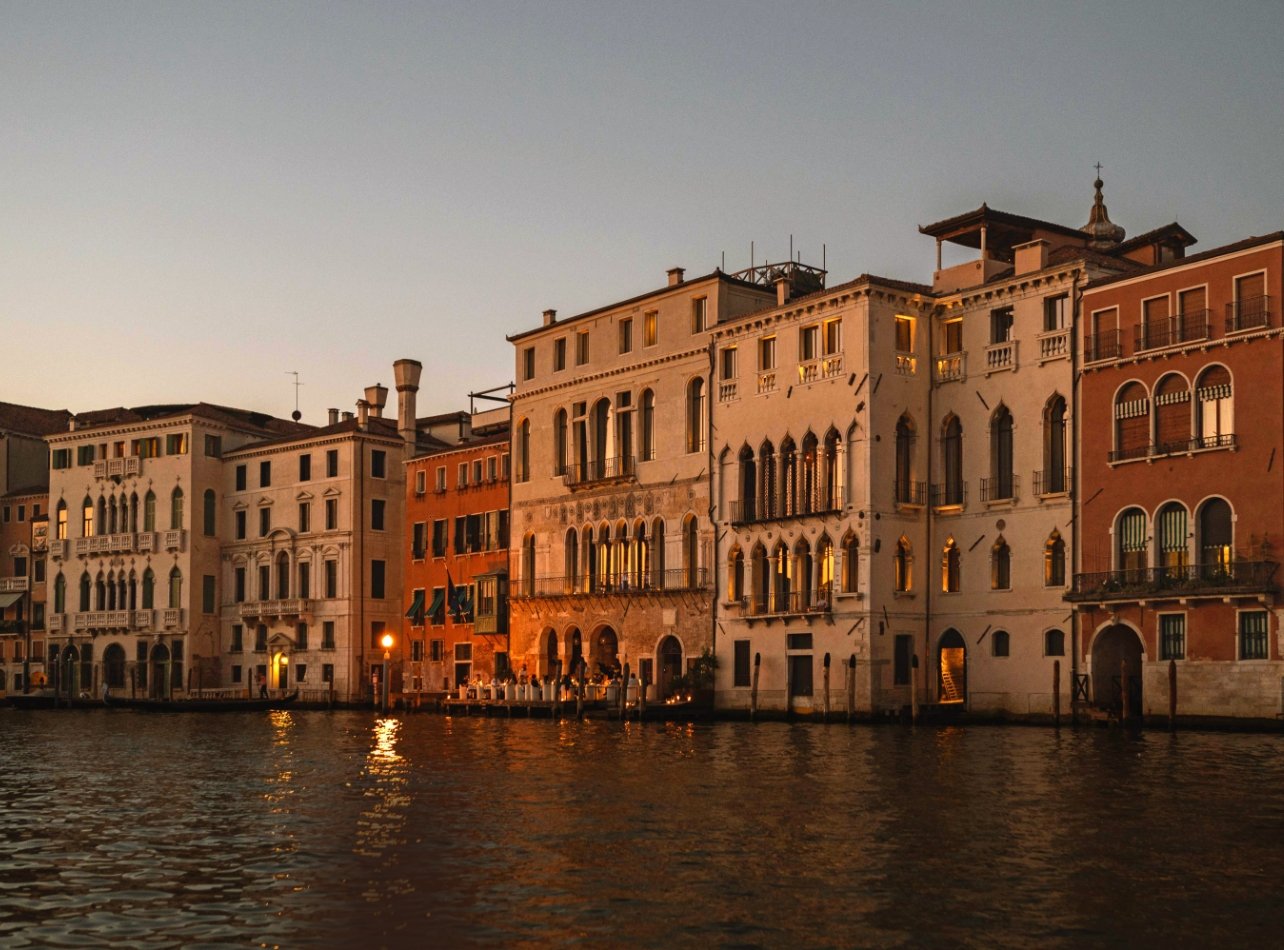
Venice’s iconic palazzos set a magical tone.
On first visit, Venice may seem like a relic. Its antique architecture and archaic transportation have changed little over the centuries. But as it evolved into a mercantile power and an important stop along the Silk Road during the medieval to early modern periods, the city is continually in flux and always welcoming new energy—much of it tied to the recurring international events that take over Venice each year. One of 2024’s biggest is the Venice Biennale, which opened in April with many new exhibitions across the city. If you are planning to visit over the next few months, you’re in for a treat.
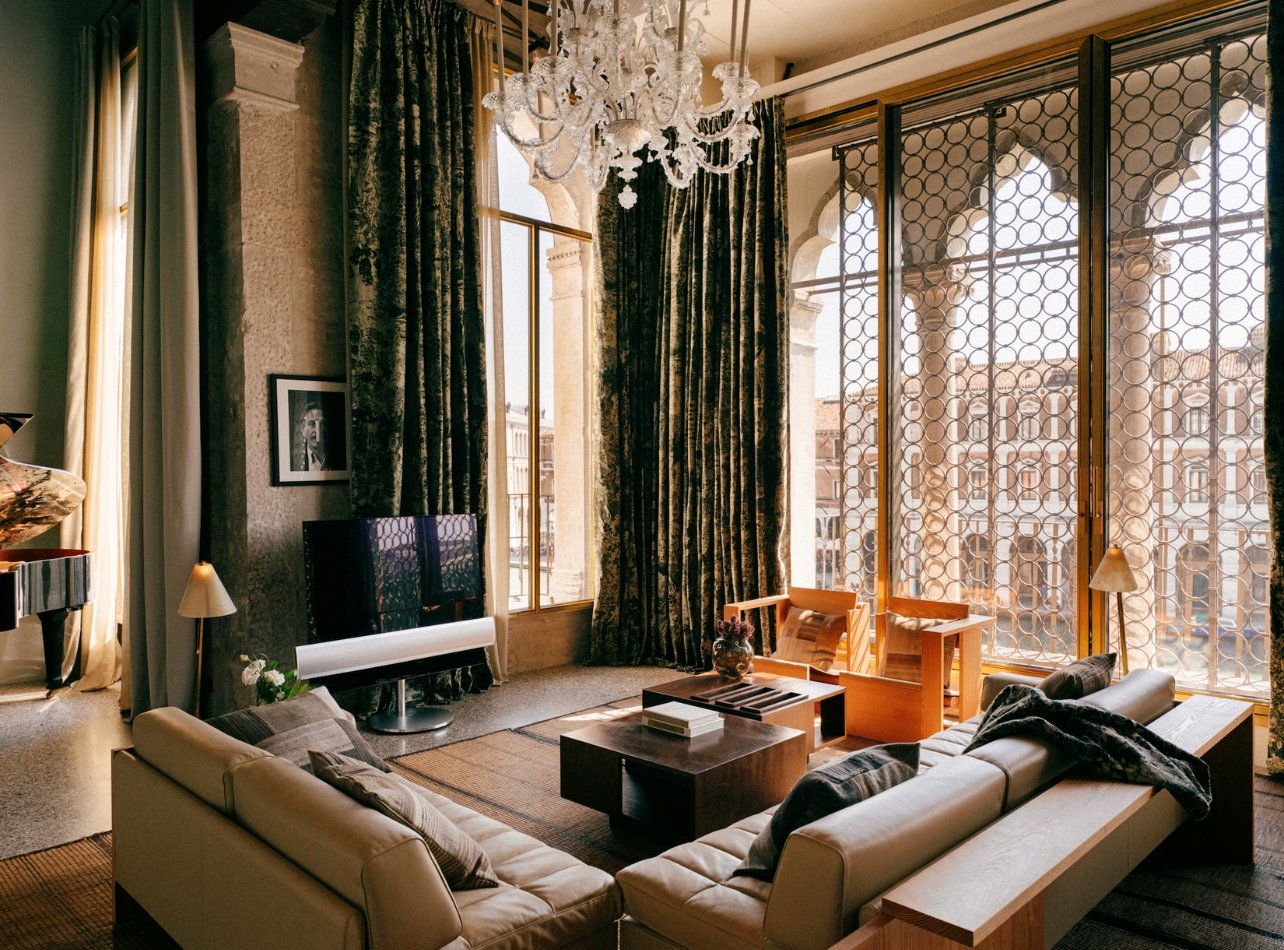
The Venice Venice Hotel, owned by Golden Goose founders Alessandro Gallo and Francesca Rinaldo.
WHAT TO DO
If you’re visiting the Venice Biennale, which is open through November 24, the sprawling grounds of the Giardini and Arsenale are separate undertakings unto themselves, so mapping out a plan of attack is a must. This year’s curator, Artistic Director of the São Paulo Museum of Art Adriano Pedrosa, has chosen the theme “Foreigners Everywhere,” so you can expect a wide range of artwork from across the globe in the Biennale’s main exhibition, which Pedrosa has described as “a celebration of the foreign, the distant, the outsider, the queer, as well as the Indigenous.” Also in the Giardini is the United States pavilion, which has been staged by Indigenous artist Jeffrey Gibson, known for his contemporary interpretations of traditional Choctaw-Cherokee themes. Other highly anticipated pavilions include multimedia artist Julien Creuzet, who is representing France, and visual artist Koo Jeong A, who has created an installation based on scents for the Korean pavilion.
During the Biennale, Venice is teeming with temporary exhibitions that run concurrently at the city’s excellent array of museums, foundations, and independent galleries. Among them is London’s Victoria Miro gallery, which opened a Venice outpost in 2017. This spring, a new series of paintings by the New York artist Sarah Sze is on view through June 16, billed as an immersive exploration of “how images are constructed and memories are formed.” Palazzo Grassi and Punta della Dogana, the Pinault Collection’s two Venice art spaces, are showing works by Ethiopian-American painter Julie Mehretu and friends, as well as French sculptor and filmmaker Pierre Huyghe, respectively. While at the architecturally extravagant 16th-century Museo di Palazzo Grimani, Egyptian artist Wael Shawky has a solo exhibit.
Several offsite shows staged by brands are also well worth a visit. Supported by Dior, Karishma Swali’s Chanakya Foundation presents “Cosmic Garden,” an exhibition focused on hand embroidery via the paintings and sculptures of Madhvi Parekh and Manu Parekh, at Salone Verde—Art & Social Club. Jewelry brand Buccellati is hosting a major retrospective titled “The Prince of Goldsmiths, Rediscovering the Classics.”
Lastly, be sure not to miss the smaller, independent art spaces in Venice. The recently opened Galerie Negropontes, Barbati Gallery, A plus A, Galleria Alberta Pane, and Patricia Low Contemporary should make it onto your gallery-hopping list while about town.
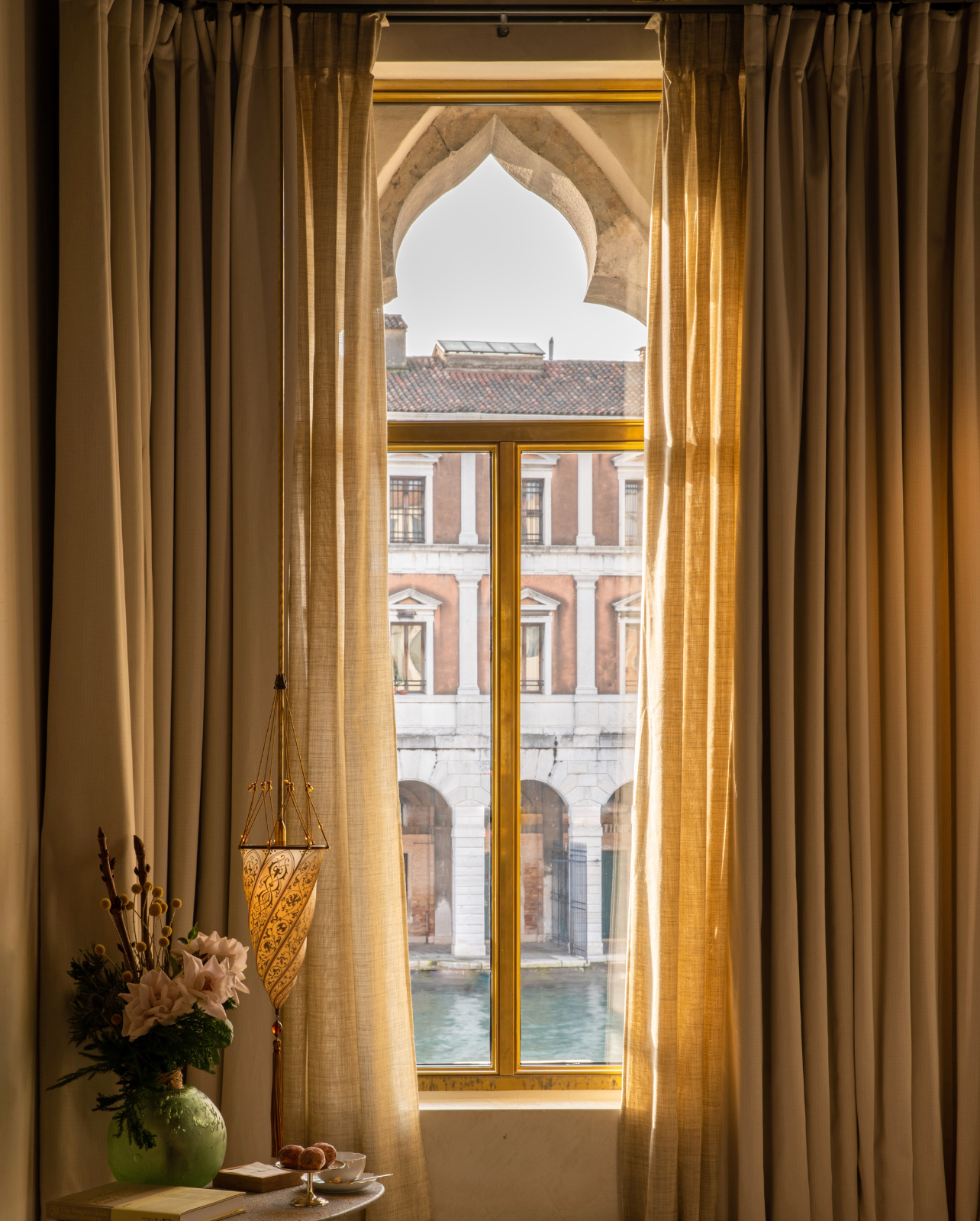
A room with a view at the Venice Venice Hotel inside the 13th-century Ca’da Mosto palace.
WHERE TO STAY
Venice hotels are some of the world’s most enchanting, and that includes the raft of properties that have opened in recent years. Among them is Venice Venice Hotel, from Golden Goose founders Alessandro Gallo and Francesca Rinaldo, who hail from nearby Mestre. Hosted in the 13th-century Venetian-Byzantine Ca’ da Mosto, one of Venice’s oldest palaces, near the Rialto Bridge, each room is furnished with pieces from the Gallo and Rinaldo’s art collection, including works by Joseph Beuys, John Cage, and Yoko Ono. Last summer, the Nolinski Venezia hotel, Evok hotel group’s first outside France, opened in Venice’s former Stock Exchange. The beautifully furnished space by French-Italian designers Yann Le Coadic and Alessandro Scotto comprises 43 rooms, two restaurants by Michelin-starred Chef Philip Chronopoulos, and an expansive rooftop spa. Another new arrival is Violino d’Oro, a charming family-run boutique property just off Piazza San Marco. The 32-room hotel features an intimate bar and a small on-site restaurant, Il Piccolo, known for its plant-forward menu of seasonal Venetian classics.
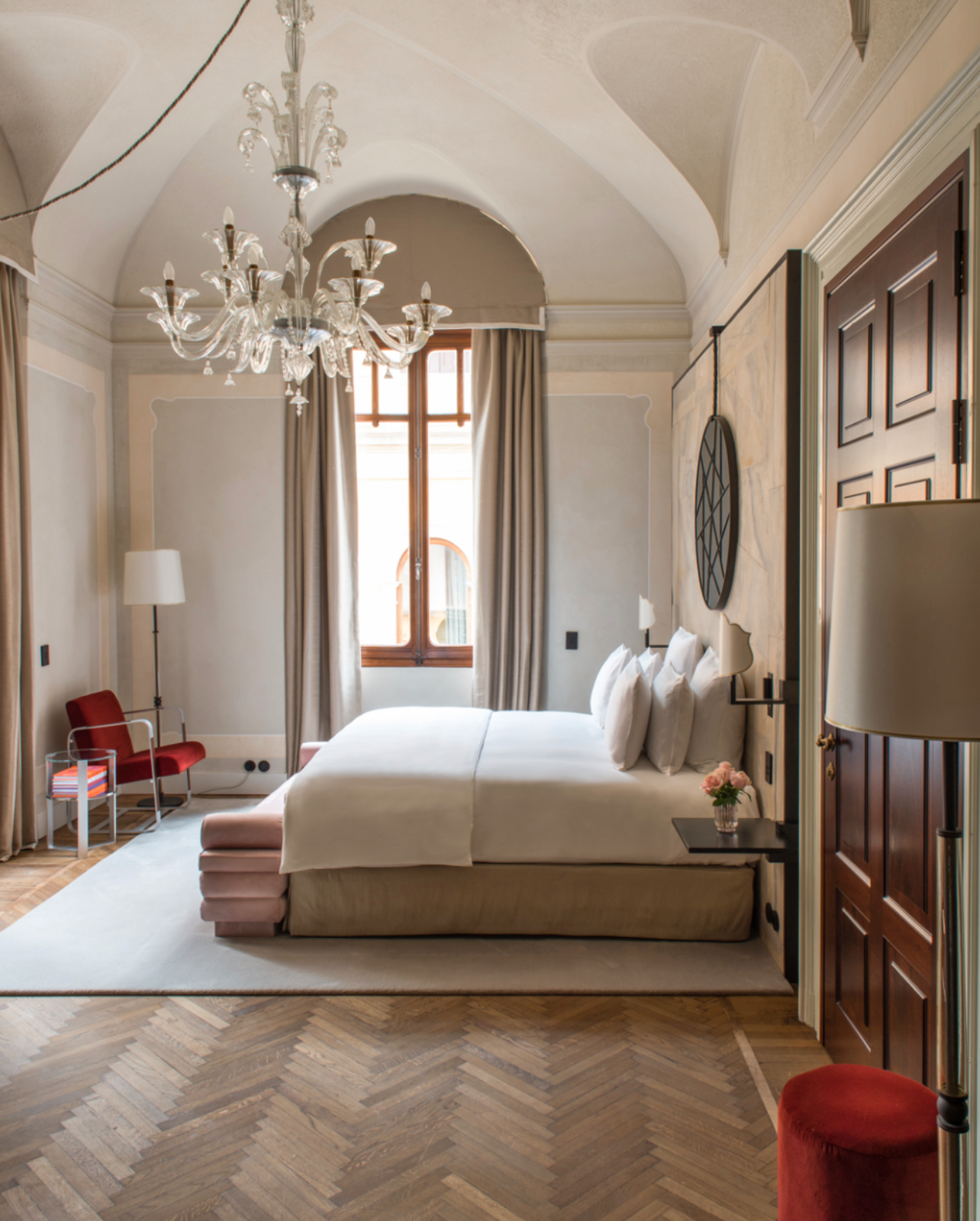
One of 13 suites at the Nolinski Venezia hotel, which opened last summer.
WHAT TO SEE
Venice’s glories are all generally quite well-trodden, but it never gets old marveling at the gold mosaics in Basilica di San Marco, riding in a Riva down the Grand Canal, or meandering through the shops on the Rialto Bridge. However, some slightly more under-the-radar places are also worth your time. The Fortuny Museum, for instance, where you can see firsthand the couturier Mariano Fortuny’s one-time studio. Or the Peggy Guggenheim Collection in the former canalside mansion of the art-collecting heir, who called Venice home for the second half of her life. The little-known Fondazione Giorgio Cini—a sprawling cultural center with excellent temporary exhibitions opposite Piazza San Marco on the minuscule San Giorgio Maggiore island—is worth an afternoon’s wander. So is the San Michele Cemetery, a small outcrop halfway between Venice and Murano. The latter deserves a day trip to visit the still-functioning glass ateliers and wonderfully eclectic Venice Glass Museum.
If you’re keen to bring home a uniquely Venetian souvenir, the glass brand Giberto, run by Count Giberto Arrivabene Valenti Gonzaga, recently opened its first outpost in a Rialto Bridge storefront selling beautifully handmade Murano glass home accessories. Another contemporary local glass maker, Laguna B, occupies a small shop in Dorsoduro on the west side of the Grand Canal. The products, including colorful cups with abstract designs and vibrantly striped vessels, offer a more playful take on the historic craft. For exquisite fabrics and textiles handmade in Italy, designer Chiarastella Cattana’s shop is a must-visit. And for those ubiquitous Friulane slippers, the almond-toe velvet flat you see worn by chic Venetians, there are several local makers to choose from, including ViBi Venezia, sold at Al Duca d’Aosta in Piazza San Marco; Le friulane di Massimo Dittura; and Piedàterre.
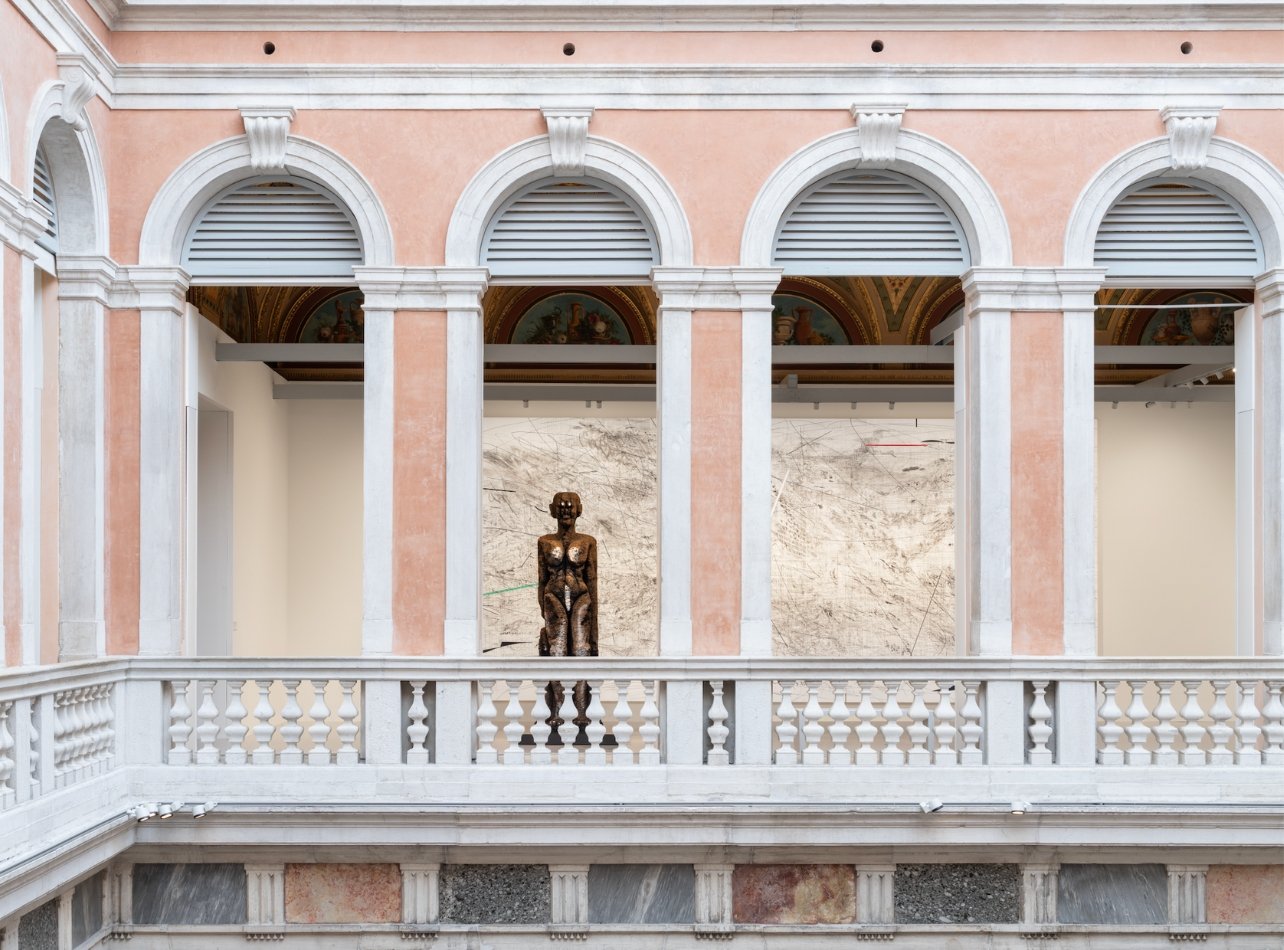
The group exhibition “Julie Mehretu. Ensemble” is on view at Palazzo Grassi through January 2025.
WHAT TO PACK
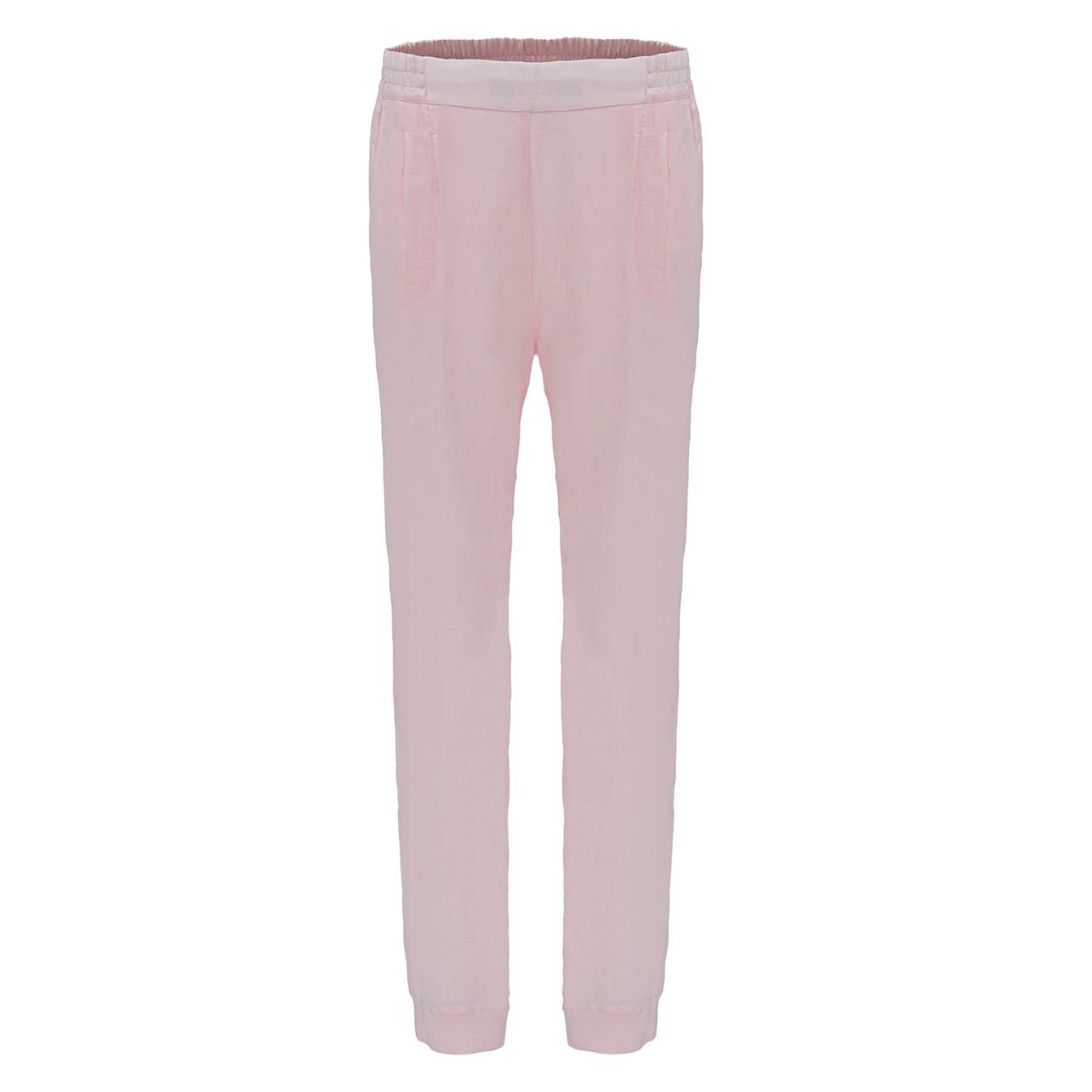
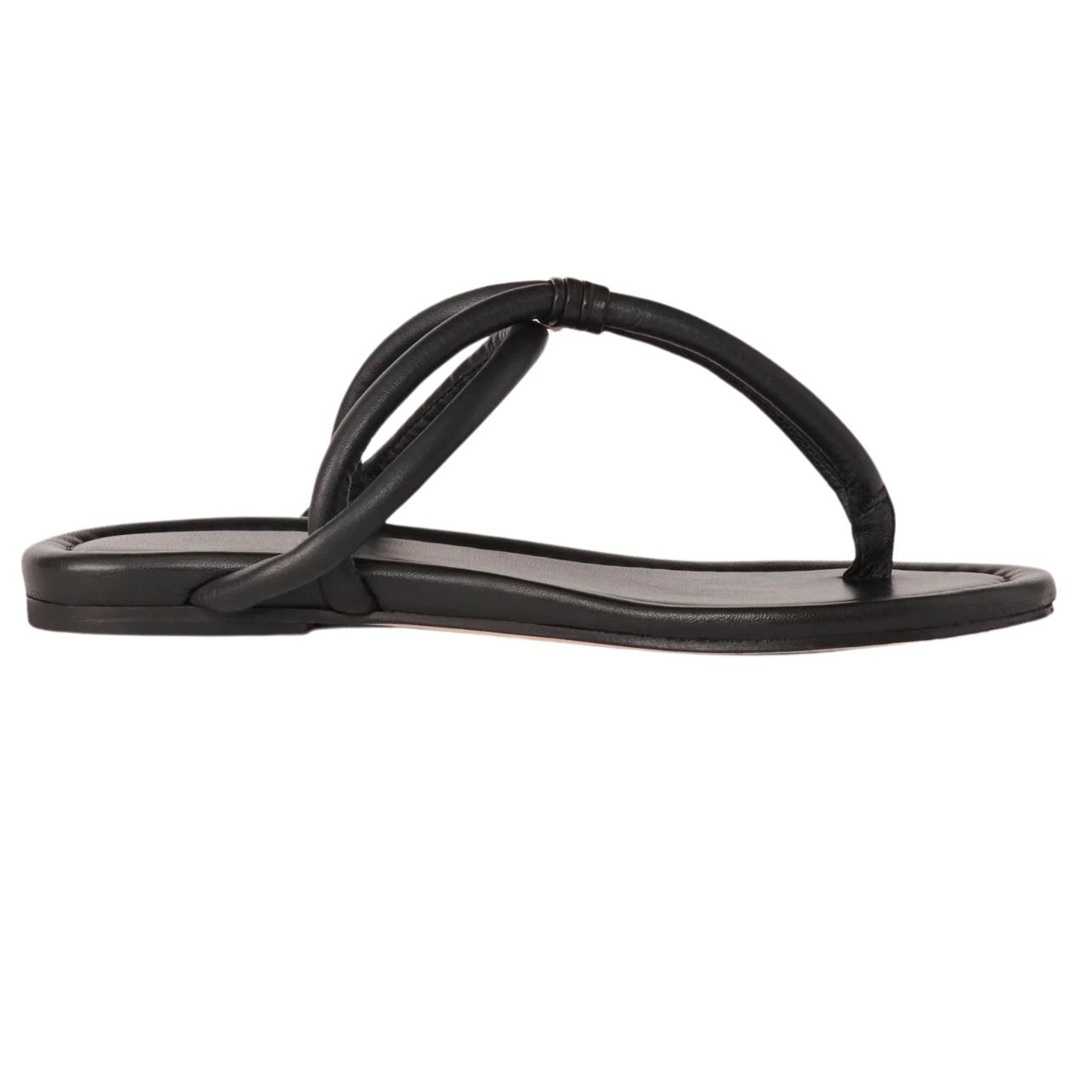
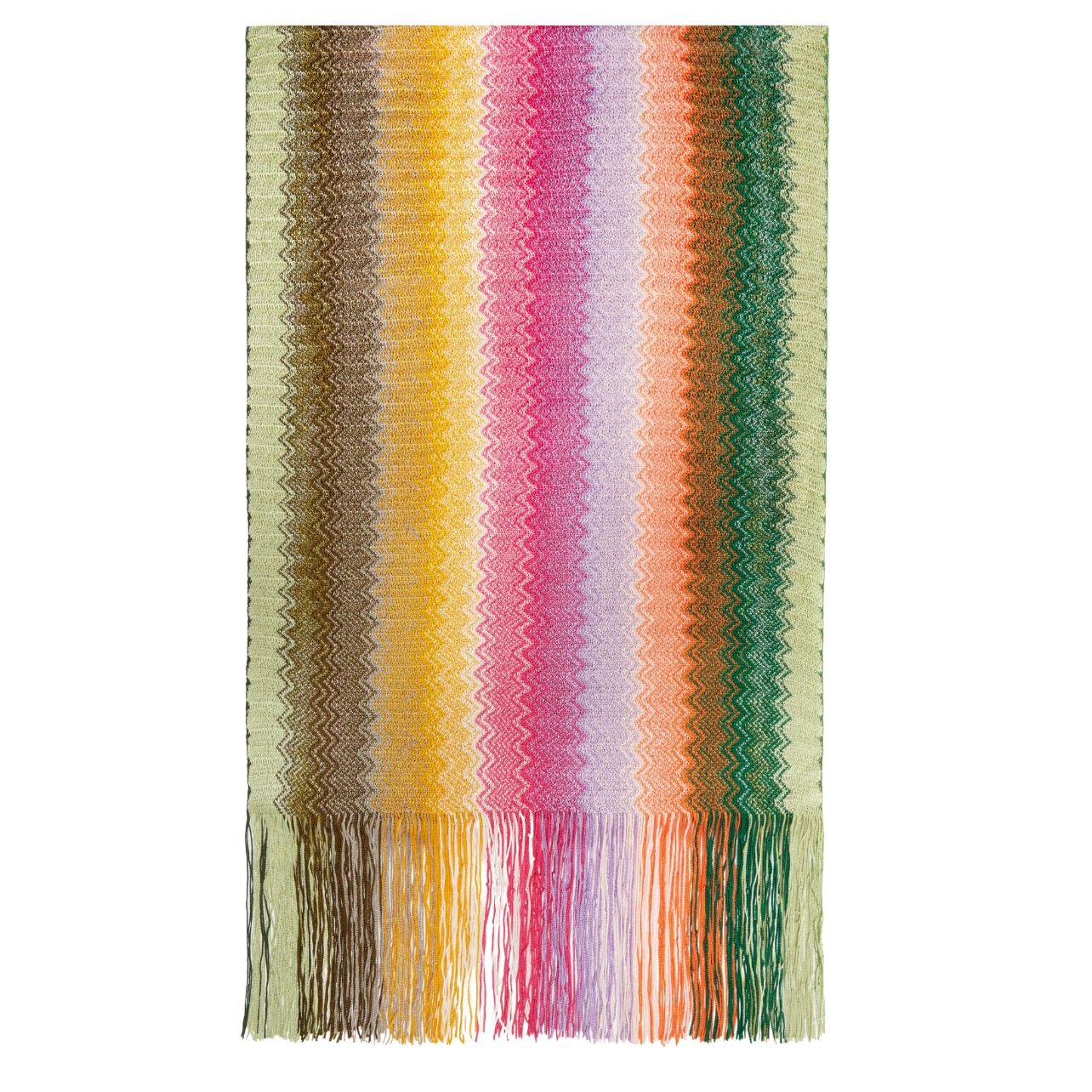

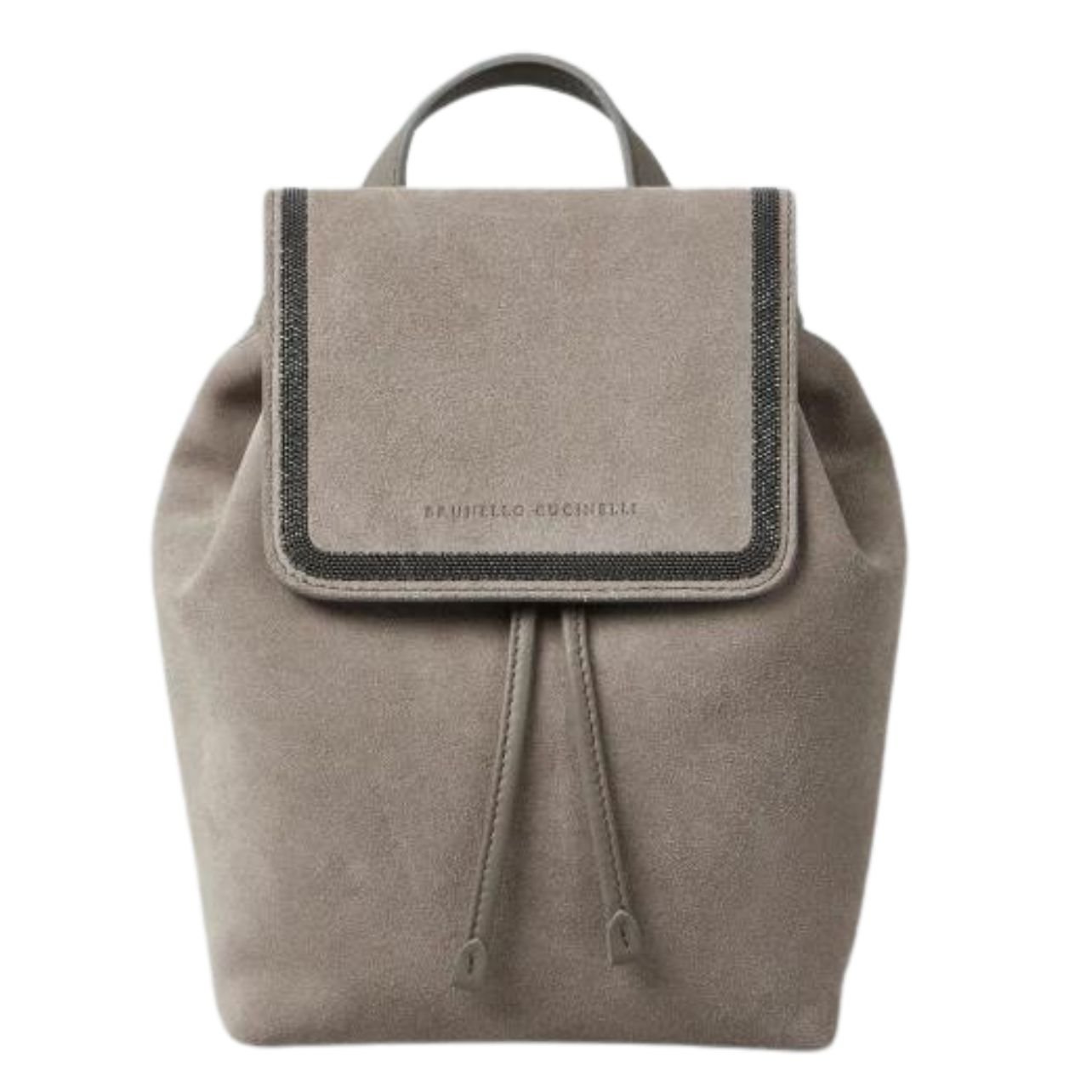
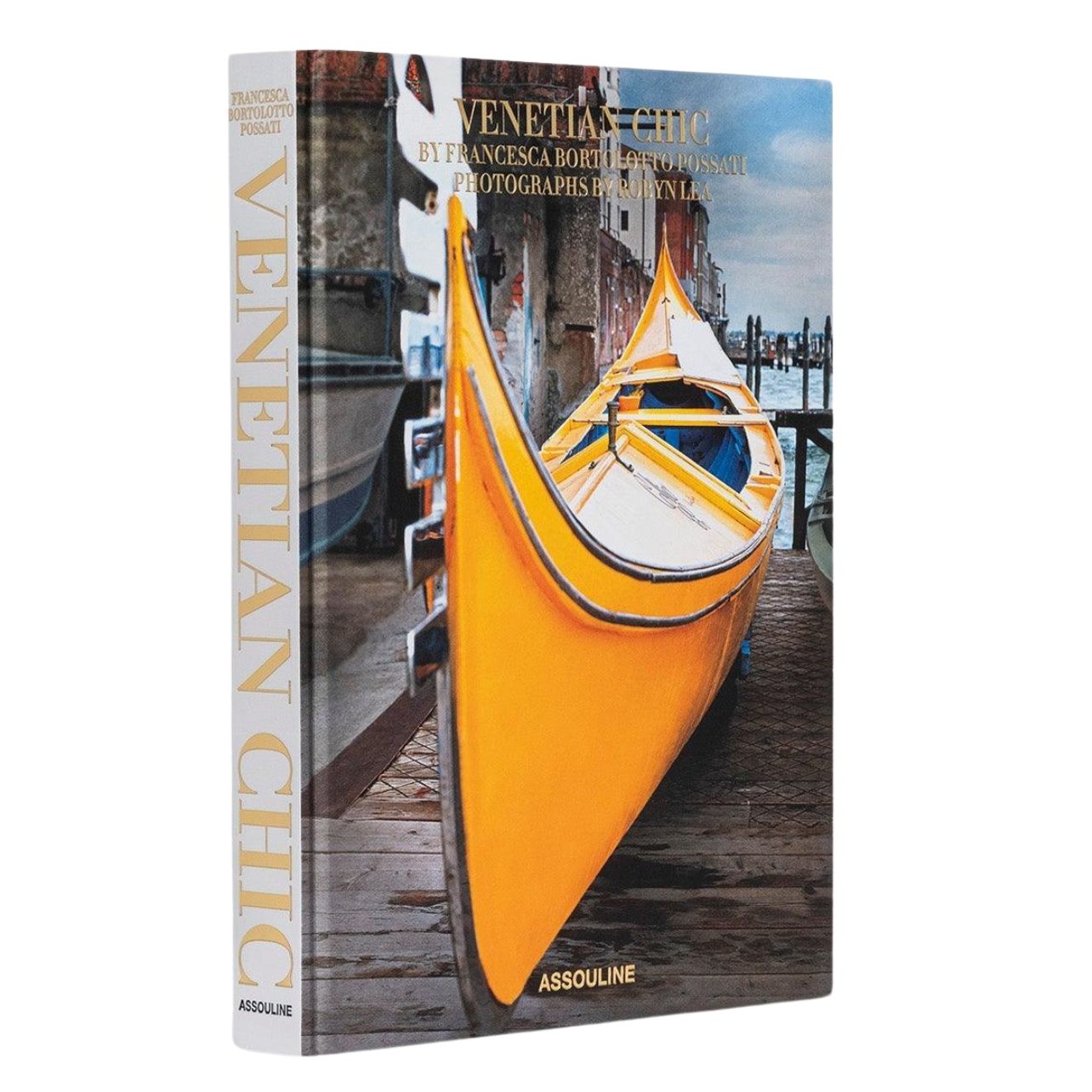
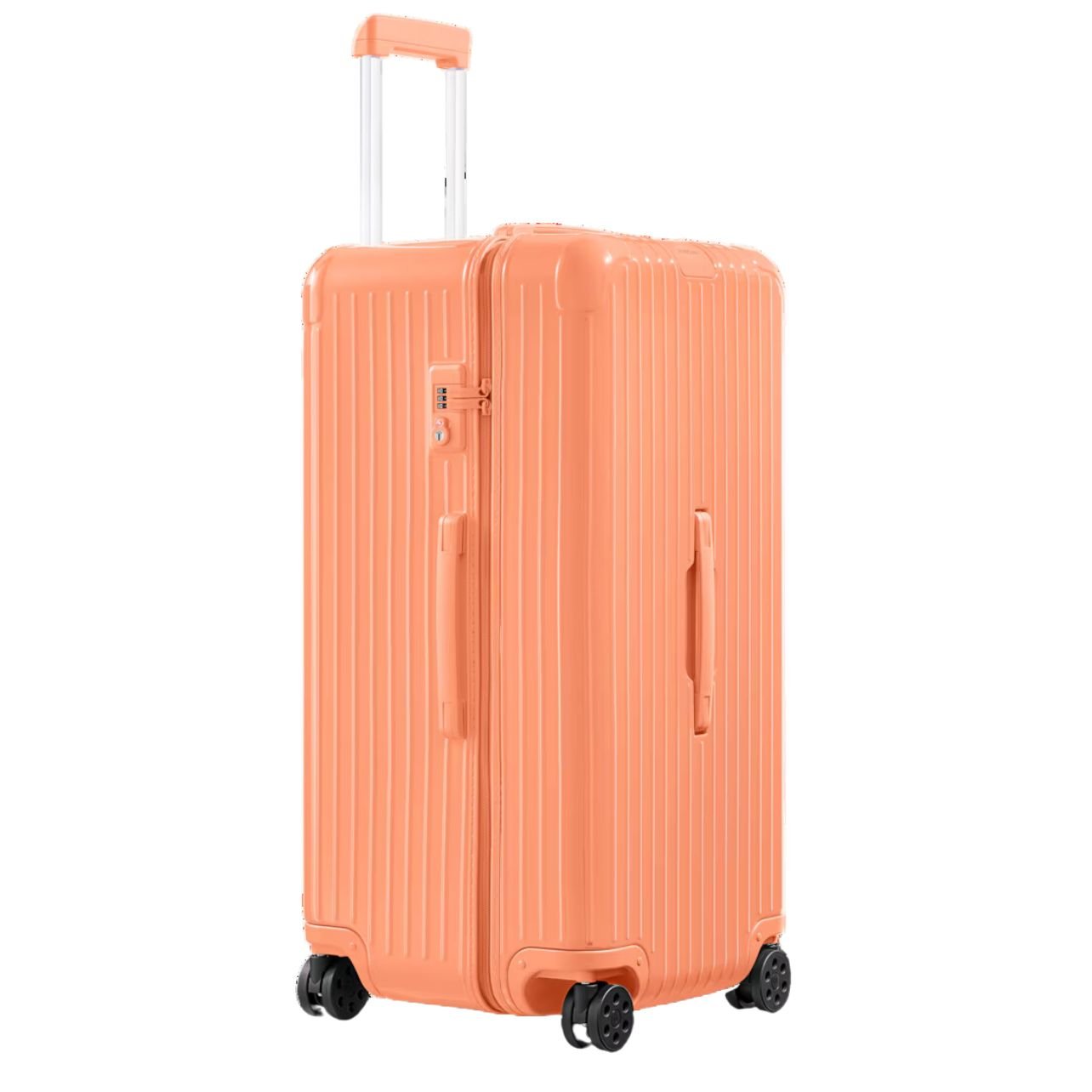

WHERE TO DINE
Dining out in Venice can be hit or miss. It takes a keen eye to separate the tourist traps from the beloved local eateries and ambitious new restaurant concepts. Furthermore, traditional Venetian cuisine can be more challenging to the palate than mainland Italian fare. For some, dishes like sarde in saor—a sweet and sour concoction consisting of sardines, onions, raisins, and vinegar—creamed codfish known as baccalà mantecato, and squid ink pasta are an acquired taste. That said, there are a host of places experimenting with contemporary interpretations of these uniquely Venetian flavors. At Hostaria Castello, located a few streets away from the Arsenale, try the sautéed calamari with fennel cream, ricotta and spinach ravioli with smoked eggplant, or tuna steak with sautéed chicory and marinated onion. The canalside El Magazen serves a tasting menu that includes buffalo burrata with sturgeon caviar and soqquadro pasta with ragu and chestnuts. In Cannaregio, along the northern edge of the island, Estro Vino e Cucina’s grilled octopus with potato cream and celeriac, and garlic pasta with langoustines are standouts. Nearby is Dama, a relatively new space known for delicate vegetarian dishes and seafood. Pietra Rossa by Andrea Lorenzon is another vaunted newcomer specializing in local cuisine and natural wine. However, if you’re craving something different after immersing yourself in the regional flavors of the floating city, the recently opened Bacán offers Latin American cuisine and an impressive array of mezcal.
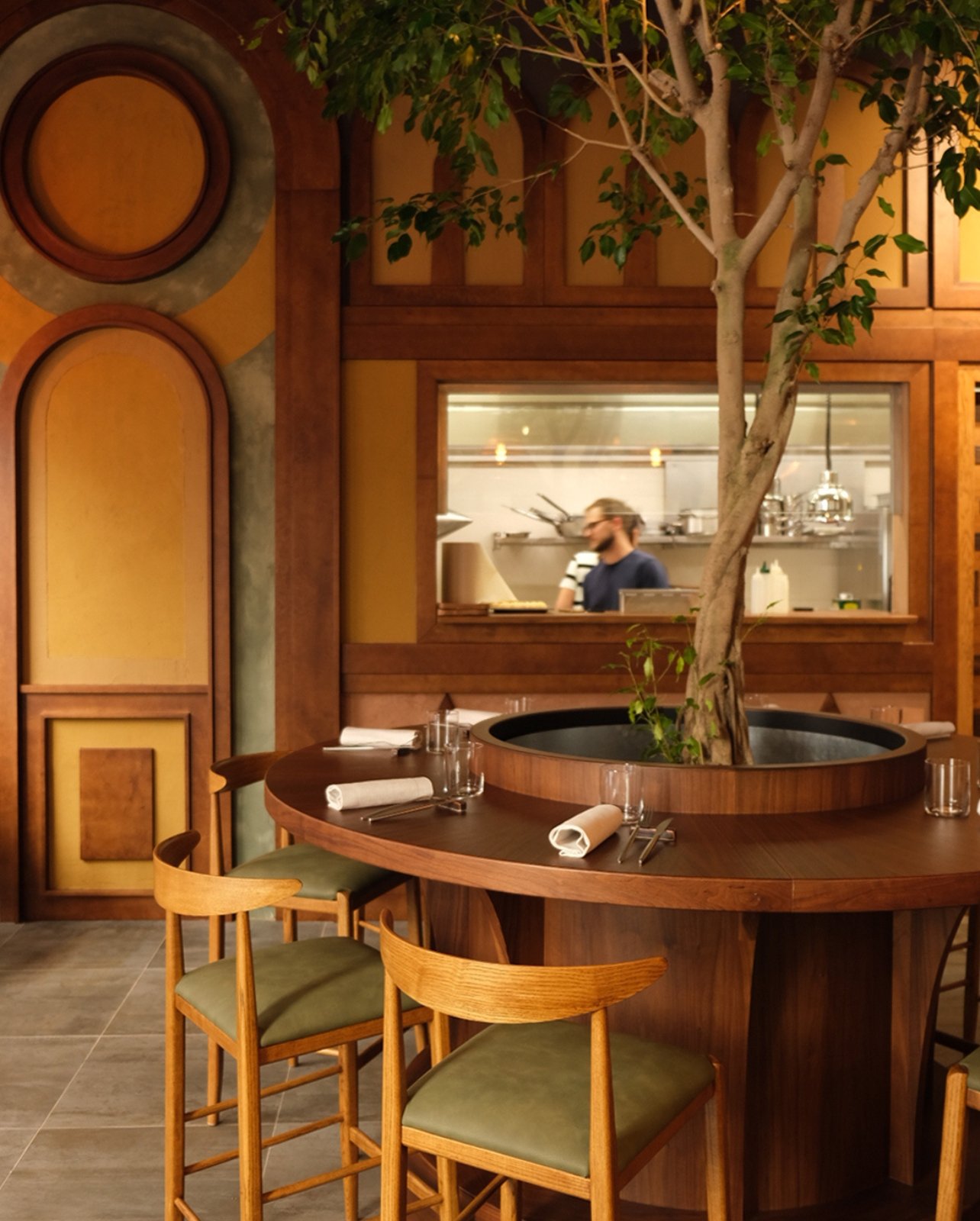
The recently opened Bacán offers Latin American cuisine and an impressive array of mezcal.
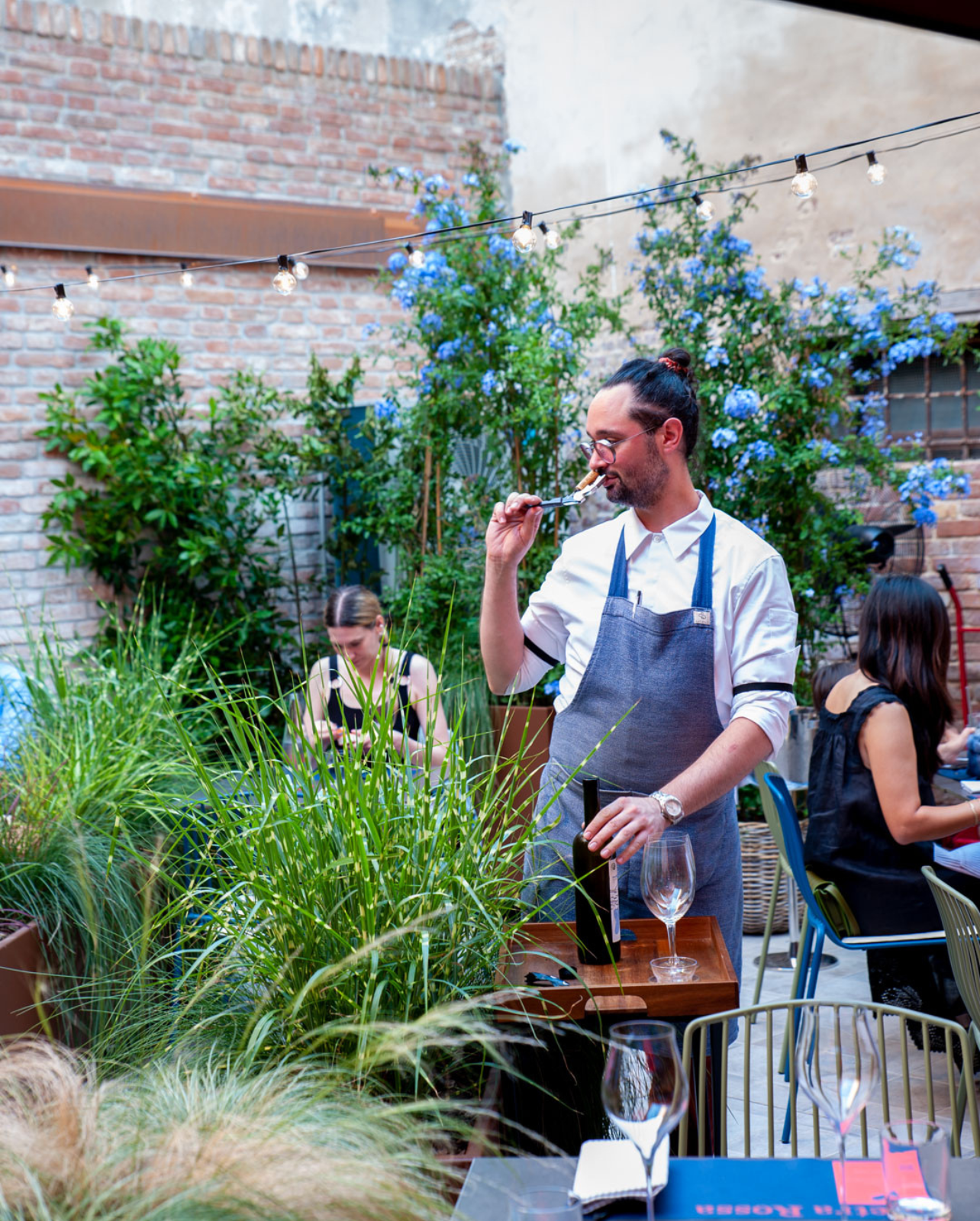
Pietra Rossa Restaurant by Andrea Lorenzon offers vegetarian dishes and seafood with natural wines.
